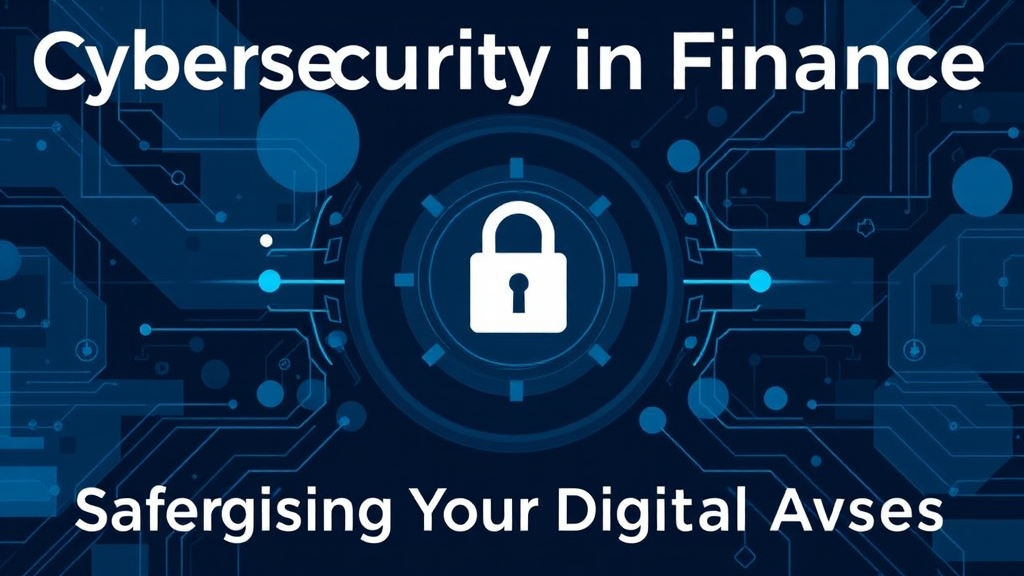Introduction to Cybersecurity in Finance
The Importance of Cybersecurity in the Digital Age
In the digital age, cybersecurity is crucial for finance professionals. He must understand the risks associated with digital transactions. Cyber threats can lead to significant financial losses. This is a serious concern for investors. Protecting sensitive information is essential for maintaining trust. Trust is the foundation of financial relationships. As technology evolves, so do the tactics of cybercriminals. Awareness is key to staying ahead.
Overview of Digital Assets and Their Vulnerabilities
Digital assets, such as cryptocurrencies and tokenized securities, present unique vulnerabilities. These include hacking, fraud, and regulatory risks. Each risk can lead to substantial financial loss. Investors must remain vigilant.
Common vulnerabilities include:
Understanding these threats is essential for safeguarding investments. Awareness is crucial for financial security.
Common Cyber Threats to Digital Assets
Phishing Attacks and Social Engineering
Phishing attacks exploit human psychology to gain sensitive information. He may receive fraudulent emails that appear legitimate. These emails often contain links to counterfeit websites. Clicking these links can lead to credential theft.
Social engineering tactics manipulate individuals into revealing confidential data. This can occur through phone calls or messages. Awareness is vital to prevent such breaches. Trust your instincts and verify sources.
Malware and Ransomware Risks
Malware and ransomware pose significant threats to digital assets. These malicious programs can infiltrate systems and encrypt data. Once encrypted, access to files is often denied. This can lead to substantial financial losses.
Ransomware typically demands payment for data recovery. He must be cautious about downloading unknown software. Regular backups can mitigate these risks. Prevention is better than cure.
Best Practices for Securing Cryptocurrency Holdings
Utilizing Hardware Wallets for Enhanced Security
Utilizing hardware wallets significantly enhances the security of cryptocurrency holdings. These devices store private keys offline, reducing exposure to online threats. Consequently, they are less vulnerable to hacking attempts. This is a crucial advantage for investors.
Moreover, hardware wallets often require physical access for transactions. This adds an extra layer of protection. He should choose reputable brands for reliability. Security is paramount in digital finance.
Implementing Strong Passwords and Two-Factor Authentication
Implementing strong passwords is essential for securing cryptocurrency holdings. A robust password combines letters, numbers, and symbols. This complexity makes unauthorized access more difficult. Additionally, two-factor authentication (2FA) adds another layer of security. It requires a second verification step, such as a text message code. This significantly reduces the risk of account compromise. Security is non-negotiable in finance.
Regulatory Frameworks and Compliance
Understanding Global Regulations on Cryptocurrency Security
Understanding global regulations is crucial for cryptocurrency security. Different countries have varying compliance requirements. For instance, the European Union emphasizes anti-money laundering (AML) measures. He must be aware of these regulations.
Key regulations include:
Compliance ensures legal operation and builds trust. Trust is vital in finance.
Compliance Standards for Financial Institutions
Compliance standards for financial institutions are essential for maintaining integrity. These standards often include rigorous anti-money laundering (AML) and know your customer (KYC) protocols. He must ensure adherence to these regulations. Non-compliance can result in severe penalties.
Key compliance measures include:
These practices foster a culture of accountability. Accountability is crucial in finance.
Incident Response and Recovery Strategies
Developing an Incident Response Plan
Developing an incident response plan is critical for mitigating risks. This plan outlines procedures for identifying and addressing security breaches. He should include roles and responsibilities for team members. Clear communication is essential during an incident.
Key components of an effective plan include:
Regular testing of the plan ensures its effectiveness. Preparedness is key to successful recovery.
Steps for Recovery After a Cyber Attack
After a cyber attack, recovery steps are crucial for restoring operations. First, he must assess the extent of the damage. This evaluation helps prioritize recovery efforts. Next, he should contain the breach to prevent further loss.
Key recovery steps include:
Finally, he should conduct a post-incident review. Learning from incidents is essential for improvement.
The Role of Technology in Cybersecurity
Blockchain Technology and Its Security Features
Blockchain technology offers robust security features that enhance data integrity. Its decentralized nature reduces the risk of single points of failure. Each transaction is recorded in a tamper-proof ledger. This transparency fosters trust among users.
Key security features include:
These elements make blockchain a strong candidate for secure financial applications.
Emerging Technologies in Cyber Defense
Emerging technologies in cyber defense are reshaping security strategies. Artificial intelligence (AI) enhances threat detection and response capabilities. By analyzing vast data sets, AI identifies patterns indicative of cyber threats. This proactive approach minimizes potential damage.
Additionally, machine learning algorithms adapt to evolving threats. They improve over time with more data. He should consider integrating these technologies into security frameworks. Innovation is essential for effective defense.
Future Trends in Cybersecurity for Finance
Predicted Threats and Challenges Ahead
Predicted threats in cybersecurity for finance include sophisticated phishing schemes and advanced ransomware attacks. These tactics are becoming increasingly difficult to detect. He must remain vigilant against these evolving threats. Additionally, the rise of quantum computing poses new challenges for encryption methods.
Financial institutions should prepare for these changes. Regular updates to security protocols are essential. Awareness is key to staying secure. Security is a continuous process.
Innovations in Cybersecurity Solutions
Innovations in cybersecurity solutions are crucial for financial institutions. Advanced threat detection systems utilize machine learning algorithms to identify anomalies. This proactive approach enhances response times. He should also consider implementing zero-trust architectures.
Key innovations include:
These technologies improve overall security posture. Security is a top priority.
